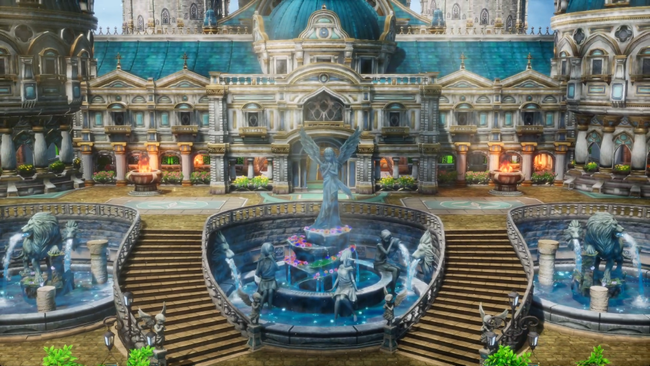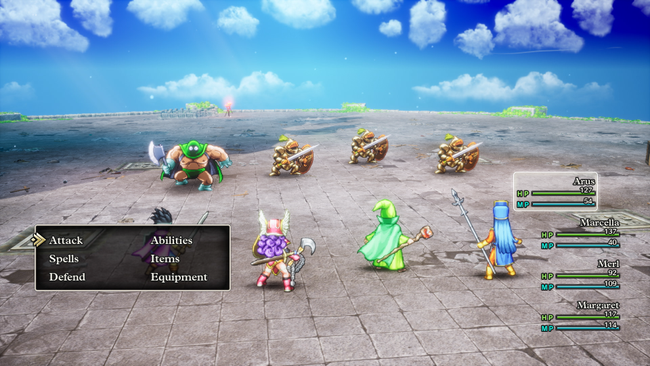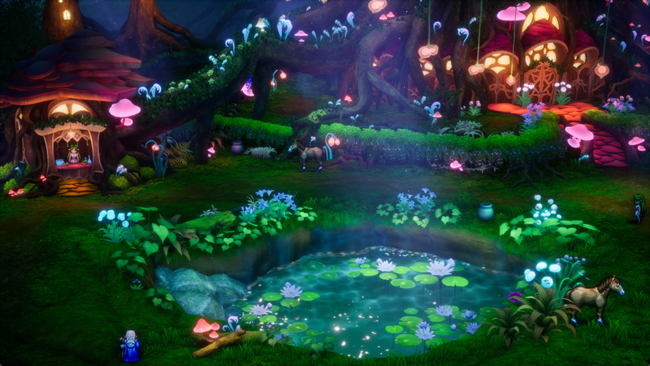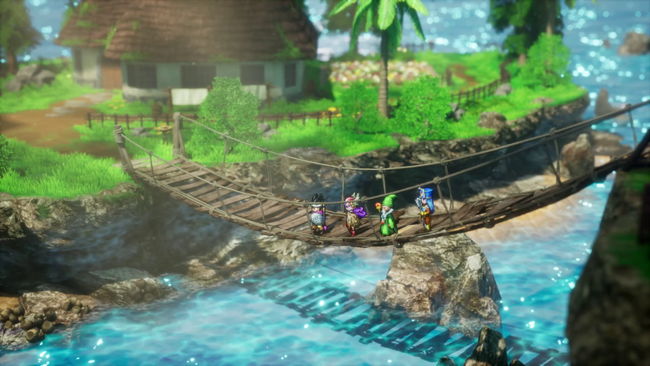
Dragon Quest III HD-2D Remake looks to please fans both new and old — Preview
Originally announced more than three years ago, Dragon Quest III HD-2D Remake finally has a release date. In November, everyone will have the chance to play a new version of one of the most beloved Dragon Quest games, even more than three decades removed from its original Japanese release.
I had a chance to meet with Square Enix earlier this Summer to go hands-on with Dragon Quest III HD-2D Remake ahead of its re-appearance in today's Nintendo Direct. During the preview session, attendees were greeted with a recorded video message by Dragon Quest creator Yuji Horii, as well as the producer of the remake, Masaaki Hayasaka.

Horii was quick to mention that Dragon Quest III's remake does not largely change the game as it was, in terms of being faithful to the original. Throughout the demo session, Square Enix was sure to repeatedly emphasize how this remake wants to maintain everything that makes the original so special and beloved, but with improvements made to appeal to more modern standards.
Hayasaka emphasized the game's new HD-2D visual style, specifically noting how it can be used to make the different regions of Dragon Quest III"s world feel more distinct, giving the experience of the journey truly feeling like a global one. He also stated that the primary goal of the remake project was to do right by fans of the original game, but also sees it as an opportunity to introduce JRPG fans unfamiliar with Dragon Quest to the series.
Although we received no hard details about what it might entail, Hayasaka did reveal that Dragon Quest III HD-2D Remake will include additional story scenarios written under Horii's supervision. I don't know in what form these manifest, whether they are more isolated narratives or intertwined with the existing story of Dragon Quest III, but fans who have played Dragon Quest III for years, if not decades, will definitely have something to look forward to here.
Before we went hands-on, Square Enix offered a few more details about the release, in addition to the November 14 release date. For those curious, Dragon Quest III HD-2D Remake is developed as a cooperation between Square Enix's Team Asano and Artdink - the developer behind 2022's Triangle Strategy. We also learned that the game's soundtrack has been recorded in full by the Tokyo Metropolitan Symphony Orchestra. It's also perhaps worth noting that the 'Seeds of Salvation' subtitle has been dropped from the game's name entirely.

Onto my experience with the game itself. Do you remember the small bit of battle footage in the game's announcement trailer that shows the party at an off-angle reminiscent of something like Golden Sun? That seemingly doesn't exist anymore, as the battle perspective remains more classic, with the camera placed directly behind the party's backs, shifting to straight-on portraits of the enemies during the attack round. Otherwise, Dragon Quest combat is a menu-based, round-based affair, as it historically is. You select your party's actions, and then the attack round will begin in turn.
While there are some new animations in place, especially regarding monster movements, most combat maintains a classic look. You'll see the animation of the sword swipe, frizz spell, or whatever battle technique you used from a first-person perspective. You'll only see the actual sprites of your party characters, from the back, in between rounds. Differences in equipment do seem to reflect on the sprites to some degree, or at least, when I equipped the Hero with a boomerang, it appeared as such in battle, ahead of the round.
There are three battle speeds: normal, fast, and ultra-fast. The normal speed feels strangely slow, perhaps being extremely faithful to the original version, but I set it to ultra-fast and never looked back. There is also an auto-battle option, which is always nice when you run into an enemy group that only requires some quick whacks to fall.
There are also voices newly added to Dragon Quest III, which honestly I was not expecting. In battle, these are battle chirps as your attacks play out. Outside of battle it seems like additional dialogue, such as most NPC chatter, is not voiced, but any main narrative dialogue will be. Voice languages available are English and Japanese, with additional text languages for French, Italian, German, Spanish, Korean, and Chinese (traditional and simplified). And yes, you can turn off voices entirely, too, should you choose to.

If you've played Octopath Traveler II, you generally should have a good idea of what to expect from Dragon Quest III HD-2D Remake's presentation. The spritework is colorful and the environments are especially pretty, however, one concern I have here is that the demo build we played had some significant framerate dips that were far more frequent than I would have liked. It's certainly possible these will be ironed out before the final release, but it was definitely noticeable during my time with the game.
Most of the game's menus maintain that classic white-letters-on-dark-box style, but there are a few new icons in place to help out here and there. For example, there are new vocation icons next to party member names that will at a glance inform you what their current vocation is. The biggest addition as far as menus go is a new map screen, both in the form of a full map that you can pull up at any time, as well as a mini-map that sits in the corner as you explore. The map screens will also give you hint on where you are supposed to go to progress the main story. For purists, know that you can turn off mini-map if you want to.
There are three difficulty options available, but they work differently than they did in Dragon Quest XI. These don't work as game modifiers that you have to 'opt into' at the beginning of the game, but instead, you can toggle between the three difficulty options at any time. The normal mode is called Dragon Quest, while the 'hard' mode is familiarly known as Draconian Quest, which offers less EXP and and money. A third 'easy' option is labeled as Dracky Quest, which I think is just delightful.

One of the most sensible new additions to the remake are new tutorials, aimed at clarifying some components that might feel a bit more esoteric to those not already familiar with Dragon Quest. For example, you'll get a pop-up explaining how to revive characters should they fall in battle, since this is done a little differently than many RPGs (at the church rather than the inn). There were also popups describing how to manage character item inventories, since members of your party can still only access the items they have on their person rather than in your endless item bag.
A few final tidbits: you can swap the confirm and cancel buttons, there is at least one new vocation added to the game (although we were only teased about this, not given any details), and you can set your character sprite to auto-run in cities, not just walk. There's an autosave that activates after every battle, so you should never lose too much progress even if you run into an unlucky encounter. Also, you can now Zoom through ceilings ... you no longer have to worry about hitting your head.
I played Dragon Quest III for the first time about a decade ago when it came to mobile devices, and it soon became one of my favorites in the series. Understanding that that version was already modernized to some degree, I'm very eager and curious to see how the HD-2D remake balances revisiting a classic while also acting as an entry point for modern RPG fans.